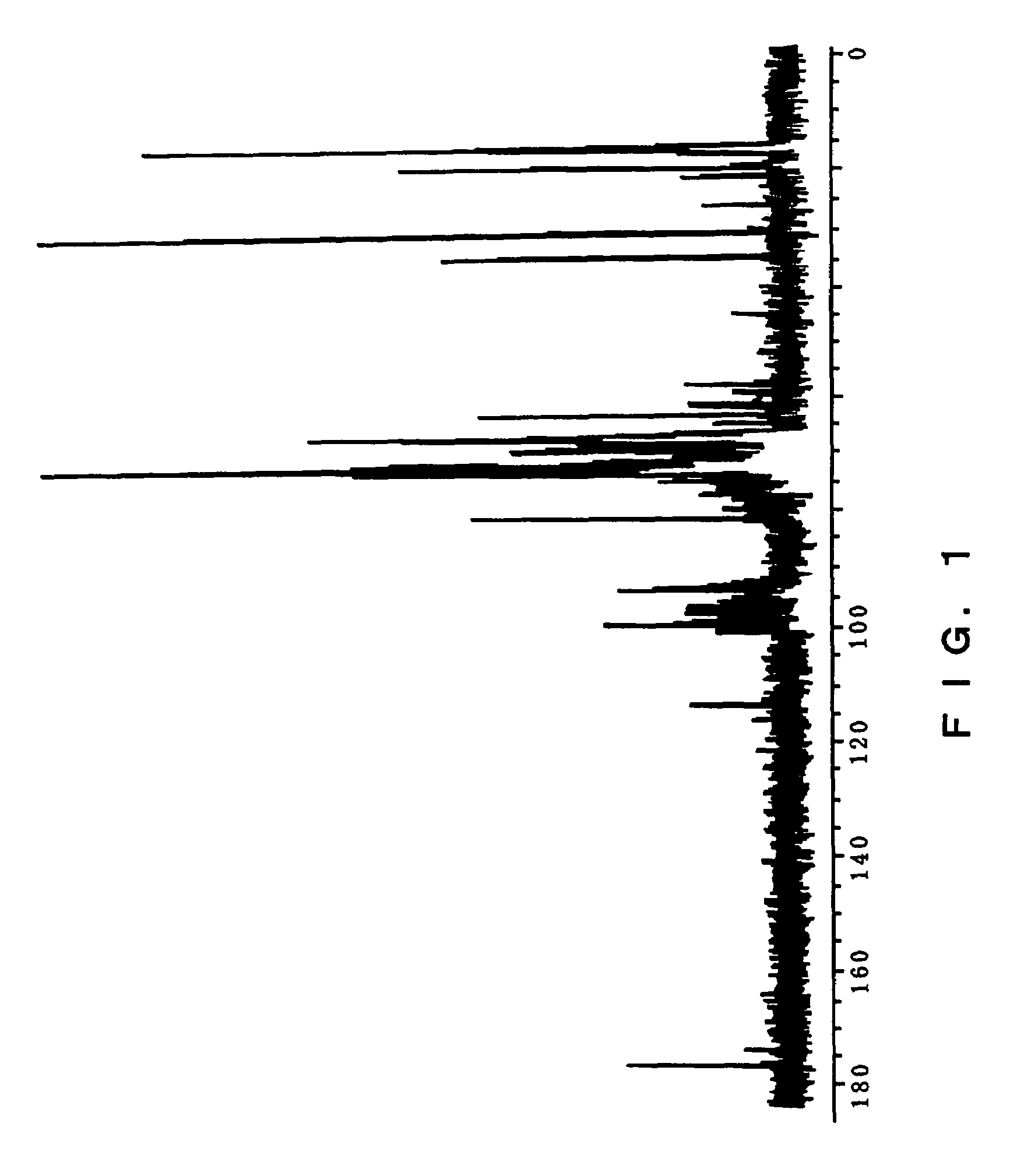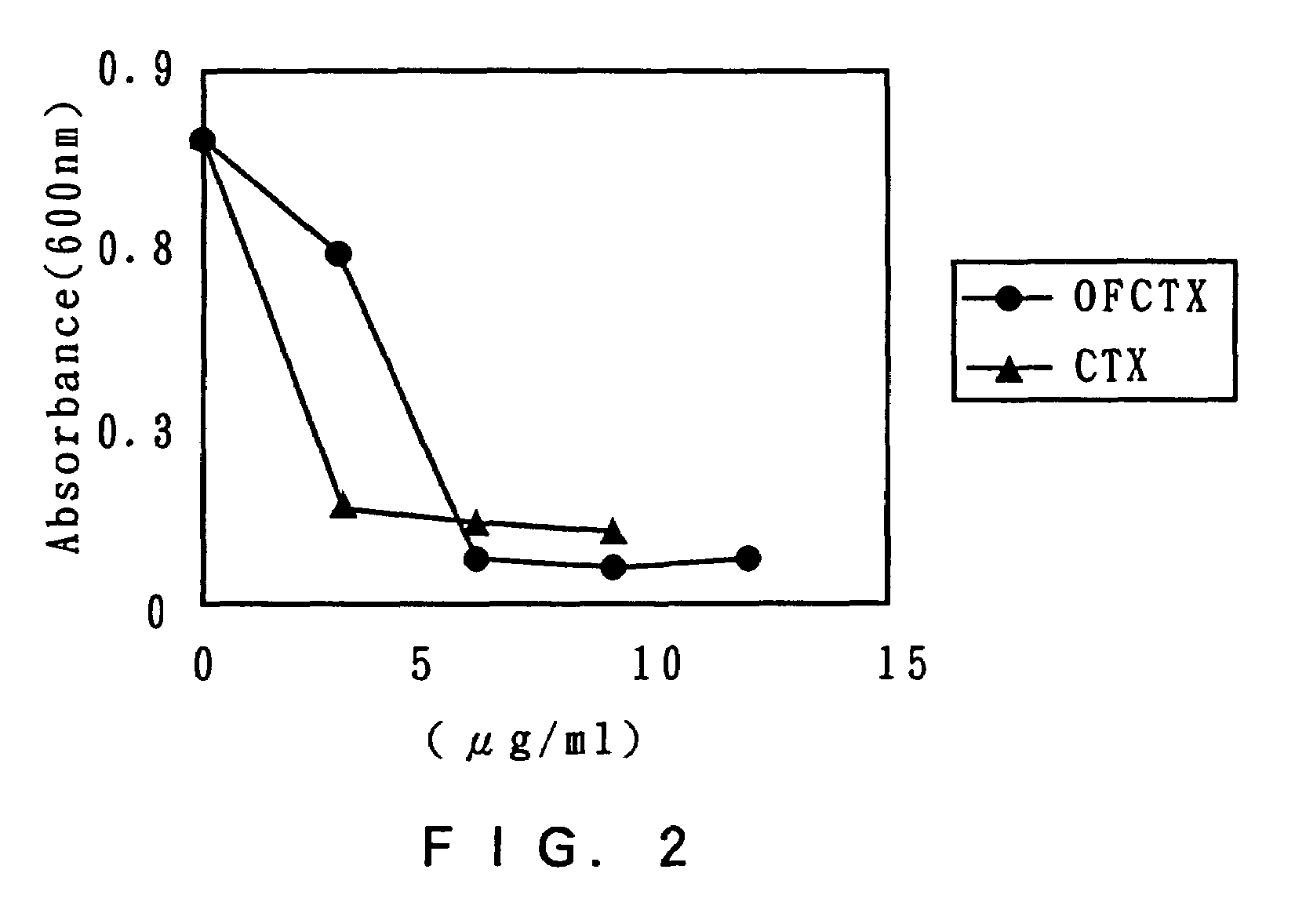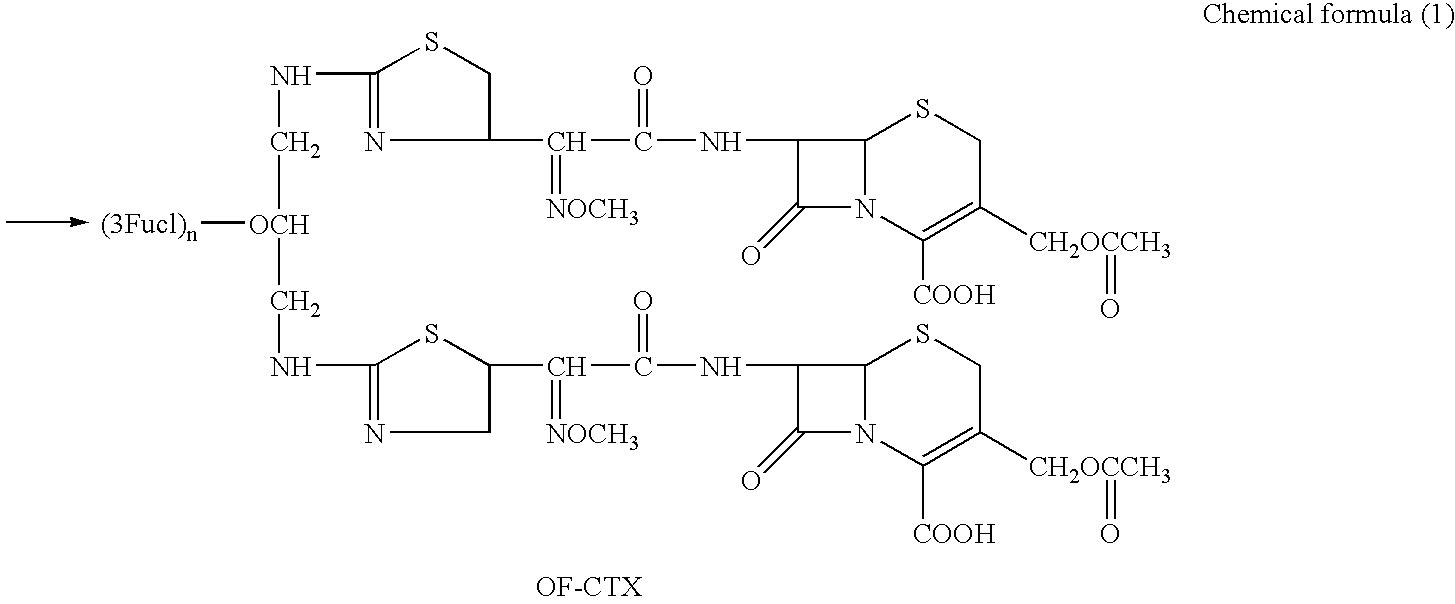Antibacterial agents and process for producing the same
a technology of antibacterial agents and derivative substances, which is applied in the field of antibacterial agents, can solve the problems of resistance bacteria emergence, repeated relapse of gastric ulcers, and unsatisfactory antibacterial action of derivative substances, and achieves suppression of side effects, high antibacterial effect, and high antibacterial effect.
- Summary
- Abstract
- Description
- Claims
- Application Information
AI Technical Summary
Benefits of technology
Problems solved by technology
Method used
Image
Examples
example 1
Production of Oligofucose Derivative
(1.1) Fucoidan Extraction and Oligofucose Production
[0050]Cladosiphon okamuranus Tolida was desalted in deionized water. After that, the resulting alga was suspended in deionized water at a ratio of 1 kg of the alga per one liter of deionized water. With hydrochloric acid, the suspension was adjusted to pH 2. After heating the resulting solution at 100° C. for 10 minutes for extraction and filtering the alga through gauze, the resulting filtrate was further centrifuged to remove insoluble matters (9,000 rpm, 60 minutes).
[0051]After the supernatant was neutralized with NaOH, sodium metaperiodate was added to a final concentration of 0.2 M, to decompose contaminated components of alginic acid and uronic acid. After 20-hour reaction in darkness, the reaction was terminated with ethylene glycol. To the resulting solution was added sodium borohydride to a concentration of 0.2 M, for reaction at ambient temperature for 16 hours. The resulting solution w...
example 2
Preparation of Carrabiose Derivative
[0065]Kappa carrageenan (10 g) was impregnated with water in 100 mL of 0.3N sulfuric acid. After permeation at 40° C. for 20 hours, heating was effected at 100° C. for 10 minutes. The resulting mixture was left to stand to ambient temperature, and was then neutralized. After removal of insoluble matters by centrifugation (20,000 rpm for 30 minutes), the resulting solution was desalted with Microacylizer and was then freeze-dried, to recover 9.74 g of carrabiose.
[0066]To 1 g of carrabiose thus recovered was added 1 g of ampicillin, and the resulting mixture was dissolved in 20 mL of deionized water. To 1 g of carrabiose was added 1 g of cefotaxime, alternatively, and the resulting mixture was dissolved in 20 mL of deionized water. These solutions were prepared as described above.
[0067]After reaction at 35° C. for one hour, 1 g of borane dimethylamine was added to the individual reaction mixtures, for reaction at 25° C. for 20 hours. To each of the ...
example 3
Demonstration 1, Antibacterial Action to Helicobactor pylori
[0071]The activity inhibiting the growth of Helicobactor pylori was assayed by the following process. To 1 mL of the Brucella culture medium was added 100 μL of a clinical isolate Helicobactor pylori strain (1.5×108 CFU / mL ), followed by addition of 0, 3, 6, 9 and 12 μL of 1 mg / mL OF-CTX or cefotaxime sodium CTX. After culturing at 37° C. for 3 days, the turbidity was assayed (at A600 nm), to count the growth ratio. The results are shown in FIG. 2.
[0072]As shown in the figure, OF-CTX at a concentration of 6 μg / mL almost thoroughly inhibited the growth of Helicobactor pylori. The activity was slightly lower than the activity of cefotaxime, but the cefotaxime content in the OF-CTX molecule was about 1 / 10 fold in molar ratio. Thus, it is indicated that the OF-CTX activity is higher than the activity of CTX alone.
PUM
| Property | Measurement | Unit |
|---|---|---|
| temperature | aaaaa | aaaaa |
| pH | aaaaa | aaaaa |
| temperature | aaaaa | aaaaa |
Abstract
Description
Claims
Application Information
 Login to View More
Login to View More - R&D
- Intellectual Property
- Life Sciences
- Materials
- Tech Scout
- Unparalleled Data Quality
- Higher Quality Content
- 60% Fewer Hallucinations
Browse by: Latest US Patents, China's latest patents, Technical Efficacy Thesaurus, Application Domain, Technology Topic, Popular Technical Reports.
© 2025 PatSnap. All rights reserved.Legal|Privacy policy|Modern Slavery Act Transparency Statement|Sitemap|About US| Contact US: help@patsnap.com



